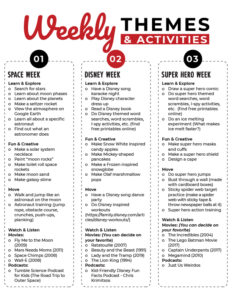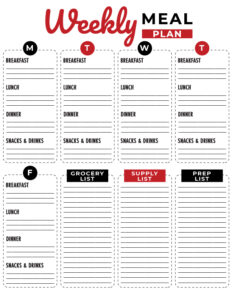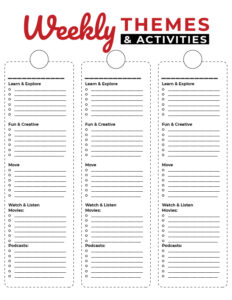With kids at home is an opportunity to provide them deep learning that is more self-directed, playful, and aligned with their development —and much easier for parents to manage. Hence, Learning at Home would always be the best option to encourage them.
The University of Washington has a few tips for learning at home.

Learning At Home
Establish a Routine. Treat your home study as if you were going to the library or classes. Set a time to wake up, shower, eat breakfast, and dress. Having a routine in place can help to structure your life and signal to your brain that “it is time to get to work.”
Have a Dedicated Study Area. When studying at home, creating a physical barrier between your study area and your relaxation area can help you stay focused. This can also help you limit your academic stress in your study area.
Take Notes for Online Classes. To avoid distraction, put your phone away, turn off notifications from messages and social media on your computer, and close irrelevant web pages. Taking notes during online classes can also keep your hands busy and help you focus on the class material.
Keep a Routine for Physical Activity. Set aside time during your study session (for example, every 45 minutes) to get up, move around, and activate different parts of your brain. You can stretch, do some jumping jacks, walk around the room, and gaze out the window.
Don’t Forget Your Social Time. Including some social time in your day can help you stay focused while studying. You can schedule a time when you are less productive to communicate with friends and family. You can communicate with them via phone calls or video chat.
Create a Study Plan and Share It with Others . Write down what you need to get done in the next three days and divide it into small tasks to complete each day. Breaking down a large task into smaller chunks can help you feel less overwhelmed and more motivated to complete it!
Eat Well, Sleep Well. When studying, choose healthy snacks and prepare lunches that will not put you to sleep. Getting at least 7-8 hours of sleep at night is the best way to wake up feeling refreshed and ready to begin your day's study.
Avoid Multitasking. You can schedule chores during your less productive time of day. Set your schedule so that you can focus on one thing at a time (e.g., studying, chores, relaxing, exercising) while knowing that you will have time later to complete other tasks on your to-do list.
We've created this Learning at Home Planner to help organize your summer of activities!
About the Learning at Home Planner Contents:

This Learning at Home Planner includes:
- Cover
- Weekly Themes
- Supplies and Resources Checklist
- Weekly Meal Plan
- Weekly Themes and Activities
Weekly Themes

The “Weekly Themes” page includes various themes:
- Space Week
- Disney Week
- Super Hero Week
- Pirates Week
- Under the Sea Week
- Dinosaur Week
- Olympics Week
- Steam Week
- Hawaiian Week
Supplies and Resources Checklist

The “Supplies and Resources Checklist” page includes sections to fill in:
- Craft and Art Supplies
- Baking & Cooking Supplies
- Printable Activities
- Movies
- Podcasts
- Books
- Board Games
- Music
Weekly Meal Plan

The “Weekly Meal Plan” page includes areas to fill in your menus:
- Breakfast, Lunch, Dinner, Snacks & Drinks from Monday to Friday
- Grocery List
- Supply List
- Prep List
Weekly Themes and Activities

The “Weekly Themes and Activities” page includes areas to fill in your activities:
- Learn & Explore
- Fun & Creative
- Move
- Watch Movies & Listen
- Podcasts
How to Get this Printable
The printable is a PDF file that you can download and print as many times as you would like.
Just fill in the form below to access your copy of the printable. Not only will you get access to this printable, but you’ll also get access to the entire library of printables I’ve created.
Click here to download this printable.
If you enjoyed this, I have a monthly membership for parents and educators that want to teach or supplement lessons with shows and movies.

“I absolutely love sharing movies with my kids as a way to teach them valuable lessons. It's like this awesome bonding experience where we all snuggle up on the couch with some popcorn, and I get to see their little faces light up with curiosity. Whether it's a classic with timeless morals or a new animated flick with hidden gems of wisdom, it's a fantastic way to impart important life lessons in a fun and engaging way. Plus, the post-movie discussions are priceless – hearing their take on the characters and the story adds a whole new dimension to our family time.” –a Homeschooling parent
With Homeschooling with Shows and Movies membership, you will get resources every month, including:
- List of This Month’s Suggested Themes
- List of Monthly Observances
- List Of Movies for Unit Study
- Unit Study Resource
- Seasonal Activities (minimum of three)
- (BONUSES) Resources for you, the teacher
These resources are worth it if you'd like to easily incorporate shows and movies into your homeschooling.
Related Posts:
- 50+ Titles for Homeschooling With Netflix
- 10 Homeschool Movies on Netflix That Will Have Your Kids Hooked
- 15 Preschool Movies That Are Educational and Fun

- 10 Top Iraq War Movies - April 5, 2024
- 15 Interracial Love Movies on Netflix - April 4, 2024
- Spanish-American War Movies: A Blend of History and Patriotism - April 4, 2024
